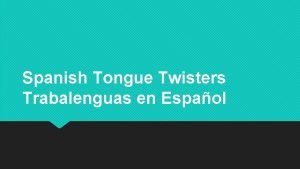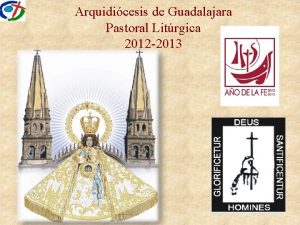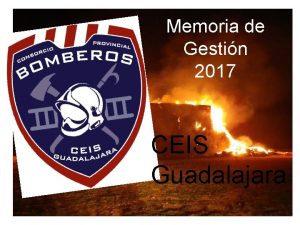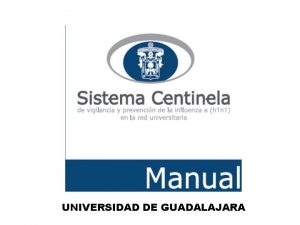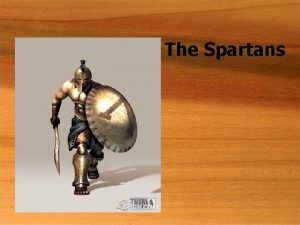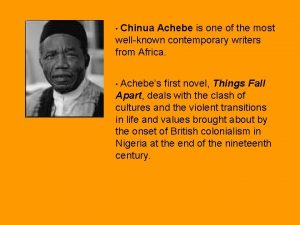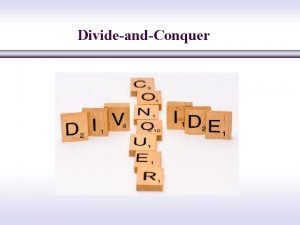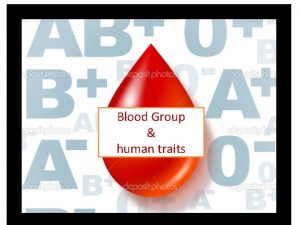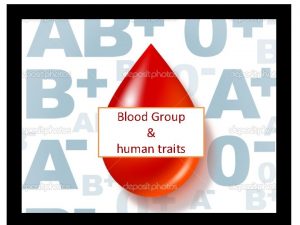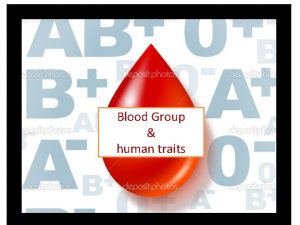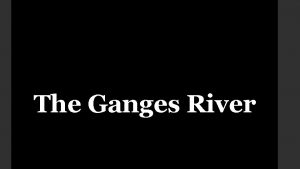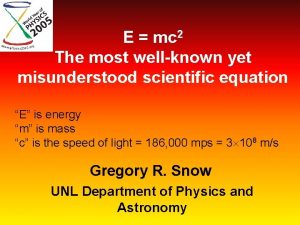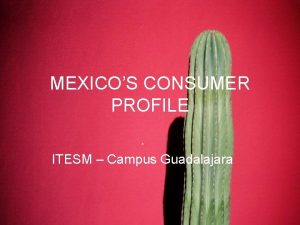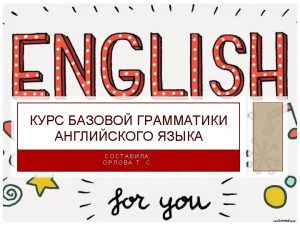UNIVERSITY OF GUADALAJARA One of the most wellknown

















- Slides: 17

UNIVERSITY OF GUADALAJARA -One of the most well-known and largest universities in Latin America -Network with both a high school system and a university system

HIGH SCHOOL EDUCATION SYSTEM (SEMS) • 22 programs: general, technical, and vocational • 24 high schools • 31 regional high schools + 66 modules SEMS TEACHER POPULATION • 904 full-time SEMS STUDENT POPULATION • 538 part-time • 3, 762 teach specific subjects • 110, 280 in General High School • 491 full-time trainer technicians • 4, 621 in Technical High School • 236 part-time trainer technicians • 5, 310 in various vocational programs = 120, 211 students = 5, 931 teachers

• Of which an extremely limited amount are certified as English as a Foregin Language Teachers (TEFL) • Which is why research incites the analysis of the English classroom’s daily content. • Particularly, the amount of Spanish (mother tongue) use that takes place in the expected English environment.

Research Objective: I) To describe the teachers’ use of Spanish in English classes in high schools from the Metropolitan Area of Guadalajara.

Justification Some educators believe that the L 1 should be prohibited from the classroom FACT: English teachers are not required to comply with an English policy in public high schools of Jalisco Other teachers support and allow the use of the L 1 in the EFL classroom

Specific Objectives Curriculum Design class of 34 students were divided into 3 groups for the same research: Group A, B, & C Group A 1) To identify the teachers’ beliefs about the L 1 2) To investigate to what extent the L 1 is used Group B 1) To analyze and describe the purposes, functions (according to Jakobson, 1960), and frequency of which the L 1 was used Group C 1) To determine strategies used by the teacher to avoid the use of L 1 2) To identify if teachers encourage the use of English

Teachers’ Use of Español in the English High School Classroom: Research Methodology Instruments Observed and video recorded different high schools pertaining to the University of Guadalajara- 19 total schools methodology(qualitative research) interviewed 29 total English teachers data analysis method) (qualitative content analysis

Subjects and context • 29 teachers: ages vary from 23 to 60 years old • Whose workfield pertains to the Central region of the state of Jalisco • Teachers works with a pre-designed syllabus to cover each semester

Instruments 1) Class observations and note-taking 2) Video recordings of classes 3) Questionnaires for teachers 4) Recorded interview with head coordinator of the language area that englobes all of the UDG high school education system

Data Collection • Creswell’s (1998) steps to analyze data were utilized: 1) Read analyzed field notes taken during observations 2) Wrote a detailed description of information gathered 3) Created chart to analyze the answers and comments teachers provided in interviews 4) Used video recordings as evidence and functioned as a tool of in-depth analysis 5) Coded data from all high school to discover patterns, if any. 6) Categorized data to simplify analysis 7) Interpreted data to solidify results

Results 5 CATEGORIES WERE CREATED TO ORGANIZE RESULTS 1. Teachers’ beliefs regarding the use of L 1 1. My students need it, English is difficult 2. This is an English class; it must be taught in English 3. Students don’t care about English, it’s a mandatory subject 2. To what extent teachers use L 1 1. Just in case of emergency 2. A couple of times would be OK, “una no es ninguna” 3. Half and half 4. Forget about English, let’s keep it simple

3. Language functions for using L 1 in class 3. 1 Referential function 3. 2 Emotive function 3. 3 Conative function 3. 4 Phatic function 3. 5 Meta-lingual function 3. 6 Poetic function 4. Teachers’ strategies to avoid using L 1 5. Encouraging L 2 after using L 1

Conclusions 1. The use of L 1 is demonstrated to be used based on the teacher's perception of the group’s understanding of the target language. 2. Mixed ability classes lead to the need of simplifying the content = the use of L 1. 3. English only policy can lead to student frustration disappointment. 4. No matter the purpose, Spanish was used in every class. and

5. The main functions observed, according to Jackobson (1960): referential (to convey meaning), meta-lingual (to communicate about the language code), and conative (to influence others’ actions). 6. 75% of teachers used the L 1 as an aid. 7. 30% utilized the L 1 as the dominant language. 8. The lack of language policy demonstrates that teachers do not feel obliged to encourage students to practice the L 2 in class. 9. Only a few teachers attempted to use at least one technique to avoid using the L 1 such as: mimicking, English synonyms, modeling examples.

References Auerbach, E. (1993). Reexamining English Only in the ESL Classroom. Retrieved Oct 13, 2016, from http: //www. ncela. us/files/rcd/BE 019020/Reexamining_English _Only. pdf Beristáin, H. (1995). Diccionario de Retórica y Poética (séptima edición). México: Editorial Porrúa. Bowen, T. (2012). An article discussing the benefits of using the learners' first language in class. Retrieved Oct 13, 2016, from http: //www. onestopenglish. com/ methodology/teaching-approaches/teaching-approaches-using-l 1 -inclass/146496. article Burns, Anne. (1999) Collaborative Action Research for English Language Teachers. United Kingdom, UK: Cambridge University Press. Blundell, J. A. , Higgens, J. and Middlemiss, N. (1982) Functions in English. Oxford: Oxford University Press. Creswell, J. (1998) Qualitative inquiry and research design. Choosing Among five traditions. California: SAGE Publications. Cohen, L. , Manion, L. & Morrison, K. (2007) Research Methods in Education. New York, NY: Routledge. Cook, V. (2001). Using the First Language in the Classroom. Canadian Modern Language Review, 57(3). Doyle, Bob. 2008. The information Philosopher. Retrieved November 1, 2016, from http: //www. informationphilosopher. com/solutions/scientists/jakobson/ Ganta, T. (2015). The strengths and weaknesses of task based learning (TBL) approach. Andhara, University of Andhara Pradesh.

Jakobson, R. (1960) Closing statements: Linguistics and Poetics, Style in language, T. A. Sebeok, New-York. Jordens, P. & Roberts, L. (n. d. ). International Review of Applied Linguistics in Language. Teaching, 53(3). Kim, Y. & Petraki, E. (20006). Students’ and Teachers’ Use of and Attitudes to L 1 in the EFL Classroom. The Asian EFL Journal, 11 (4), 58 -77. Krashen, S. (1982). Principles and Practice in Second Language Acquisiton. United States: Pergamon Press Inc. Morrison, K. R. B (1993) Planning and Accomplishing School-Centred Evaluation. Dereham, UK: Peter Francis. In Cohen, L. , Manion, L. & Morrison, K. (2007) Research Methods in Education. New York, NY: Routledge. Mead, M. (1963) Anthropology and the Camera”, in W. D. Morgan (Ed. ), The Encyclopedia of Photography, Vol. I. New York: Greystone. pp. 163 -184. In Flick, U. (2006) An introduction to qualitative research. London: SAGE Publications. Moharan, M. (2007). The Use of Students’ First Language (L 1) in the Second Language (L 2) Classroom. Retrieved Oct 13, 2016, from http: //www. labschool. pdx. edu/PD_Mini_Modules/images/8/81/Morahan. L 2 in. L 1 class. p Phillipson, R. (1992). Linguistic Imperialism. Oxford: Oxford University Press. Sebeok, T. 1960. Style in Language. New York: Cambridge Siniscalco, M. and Auriat, N. (2005). Questionnaire design. In Ross, K. (Ed. ) Quantitative research methods in Educational Planning. Paris, France: UNESCO Tang, J. (2002). Using L 1 in the English classroom. English Teaching Forum, 40(1), 36 -43. Retrieved Aug 10, 2007, from http: //exchanges. state. gov/forum/vols/vol 40/no 1/p 36. htm#top High School Education System. (2017). In Universidad de Guadalajara: Red Universitaria de Jalisco. Retrieved February 14, 2017

Teachers’ Use of Español in the High School English Classroom Universidad de Guadalajara Curriculum design – Liliana Maria Villalobos Gonzalez, Ph. D. AGUILAR ESTRADA JOSE LUIS AGUIRRE CHAVEZ MAURA BECERRA GONZALEZ GLORIA STEPHANIE CASTILLO LARA MARIA FERNANDA DE LA ROSA RICARIO MELISSA DOMINGUEZ HERRERA FERNANDA ELIDA ESPARZA CALDERON ISRAEL JOSE FRANCO LOMELI AHTZIRI NATALY (PRESENTOR) GARCIA GAMEZ DAVID ALBERTO GARCIA NAVARRO ALICIA IVETTE GONZALEZ FLORES ANDREA FERNANDA HERNANDEZ PEÑA DAVID JIMENEZ FLORES JESSICA NATALY MARCIAL MARTINEZ ROCIO MOLINA CASTAÑEDA MARIA DEL SOCORRO MONCAYO TARIN ITZEL ALABAMA MONTES ANAIS MURILLO GARCIA MARISOL (PRESENTOR) NUÑEZ PLASCENCIA MICHELLE ESTEFANIA OLMOS BERNAL ANDREA DEL CARMEN PAREDES VALDIVIA ADRIANA PORTILLO LIZARRAGA ALMA FABIOLA ROBLES MENDOZA HUGO ENREIQUE RUBIO MICHEL CITLALI RUIZ GOMEZ ABRAHAM MOISES SOLIS VILLAVICENCIO SANDRA ISABEL UVIÑA PEREZ JULIO SAID VALDEZ DEL TORO ROCIO VALDIVIA ALBA ITZEL VELAZQUEZ OROZCO NAYELI MARIELY VILLALOBOS ROBLEDO FRANCISCO JAVIER ZUÑIGA MATA JUAN EDUARDO ZUÑIGA VERDIN JOSE IGNACIO
 Papricar
Papricar Ya se seco el arbolito donde dormia el pavo real
Ya se seco el arbolito donde dormia el pavo real Trabalenguas de
Trabalenguas de Petrogas guadalajara
Petrogas guadalajara Teatro de somvras
Teatro de somvras Misal arquidiocesis de guadalajara
Misal arquidiocesis de guadalajara One god one empire one emperor
One god one empire one emperor One one one little puppy run
One one one little puppy run One king one law one faith
One king one law one faith One god one empire one emperor
One god one empire one emperor One ford plan
One ford plan See one do one teach one
See one do one teach one See one, do one, teach one
See one, do one, teach one Structure of twelfth night
Structure of twelfth night See one do one teach one
See one do one teach one Asean tourism strategic plan
Asean tourism strategic plan One vision one identity one community
One vision one identity one community Hát kết hợp bộ gõ cơ thể
Hát kết hợp bộ gõ cơ thể


